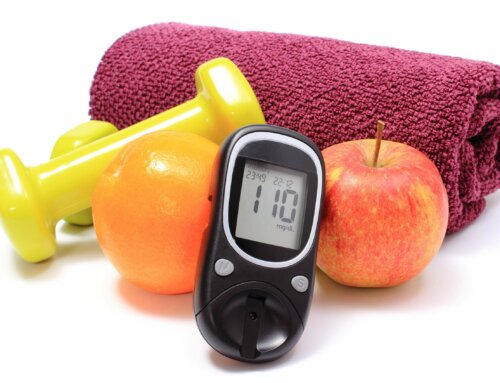Q. What are the benefits of exercise?
A. For people with diabetes, the benefits of exercise are blood glucose level improvements, stress reduction, increased energy, weight control, and for those who participate in regular physical activity, which includes moderate aerobic exercise, there will be a reduction in cardiovascular disease risk.
Q. How do I begin an exercise program?
A. Schedule a physical exam with your physician before beginning your exercise activities. This is especially important if you have not been active recently. An EKG or ECG test (electrocardiogram) may be recommended by your doctor along with a graded exercise test to evaluate how exercise may effect your heart. Ask your doctor what types of exercise are best for you.
For any recommended exercise program, remember to begin slowly and safely, and gradually increase your physical activity level over time.
Q. What is an exercise goal?
A. Remember to discuss with your doctor how often to exercise, and what level of intensity at which you should perform. Begin any exercise program with a slow, steady pace. Try to be active for at least 20 minutes in the beginning. You can steadily increase the time period for exercise over an eight (8) week period.
Research has proven that weight lifting (anaerobic exercise) may benefit people with diabetes. This type of exercise is known as “resistance training.” Lifting heavy weights may not be helpful for persons with certain diabetes complications, so always comply with your physician’s recommendations.
Q. What are the different types of exercise?
A. There are two main types of exercise, anaerobic and aerobic exercise. Anaerobic exercise involves lifting weights or using exercise bands. Activity usually lasts for a shorter duration and involves intense activity done in short bursts. Anaerobic exercise is commonly known as “resistance training” and the goal is to build muscle and increase strength.
Aerobic exercise works the large muscle groups in the arms and legs. Examples of this include: jogging, brisk walking, swimming, biking, dancing, biking and rowing. Aerobic exercise gradually increases the heart and breathing rates. Aerobic exercise is usually recommended for most diabetic patients because of the proven benefits to the cardiovascular system (heart, lungs, and blood vessels).
Q. What if I have had a sedentary lifestyle?
A. You will improve your overall health by increasing your activity level. Take advantage of any opportunity to bend and stretch as much as possible during the day.
To make your day more active, here are some simple tips to get ready, get set, and get moving:
- Parking your car further away from the store when you go shopping.
- Use stairs rather than elevators whenever possible.
- Communicate with neighbors or co-workers by stopping by in person, rather than using the phone to call.
- Stay active at home with light gardening and housework chores.
Q. What are the strategies for exercising success?
A. Make exercise part of your daily schedule – even small increases in physical activity will be beneficial to your health. Being active simply means moving more!
All physical activities should begin with a warm-up, and then progress to the chosen exercise. After exercising; remember to have a cool-down period. You will see the most progress with your exercise plan when you are consistent with a specific type of activity. For example, if you chose to walk, try to find the most convenient time of day for walking, and then stick to it.
Your exercise program should always include these three (3) essential elements:
- Warm-up: Approximately 5-10 minutes of stretching and bending. This will prevent injuries to muscles and joints.
- Activity: 20 minutes (or more) of sustained physical activity. This includes walking, biking, aerobics, swimming, or other sports, such as tennis or racquetball.
- Cool-Down: Gradually reduce your activity, and then stretch for at least 5 minutes.
Q. Are there any exercise precautions or other guidelines?
A. Remember, exercise will lower your blood glucose level. If you feel symptoms of hypoglycemia (low blood sugar), take glucose tablets or gel to treat low blood sugar. Avoid very vigorous activity when the insulin activity is peaking (insulin is working at the hardest level). If you plan to exercise at moderate or high intensity, check your blood sugar before beginning your exercise. If the blood glucose level is below 100 mg/dl, eat a light snack with a carbohydrate source before exercising. Remember, low blood sugar can occur shortly after exercise or up to 24 hours after physical activity, so monitor blood glucose levels regularly.
When purchasing shoes for exercise, protect your feet with properly fitting shoes and socks. Plan to purchase your shoes at the end of the day when your feet are larger. Avoid open-heeled or open-toed shoes.
Shoe-Fit guidelines: the in-step of the shoe should conform to your the size and the shape of your foot. Your toes should have some “wiggle-room” – the shoes should securely fit at the heel to prevent slipping.
Sock Suggestions: White socks should be used, and they should be soft and padded with no seams.
Diabetic patients need adjustments in insulin dosing or eating schedule. Food intake may need adjusting to prevent low blood sugar when exercising. For example, if you will be bike riding, do not inject insulin into your leg. Insulin should not be injected into a body part that you will use during exercise.
Wear medical identification as a precaution when exercising.
Remember to drink water and stay well hydrated. At least 64 ounces of water should be consumed daily.






Leave A Comment